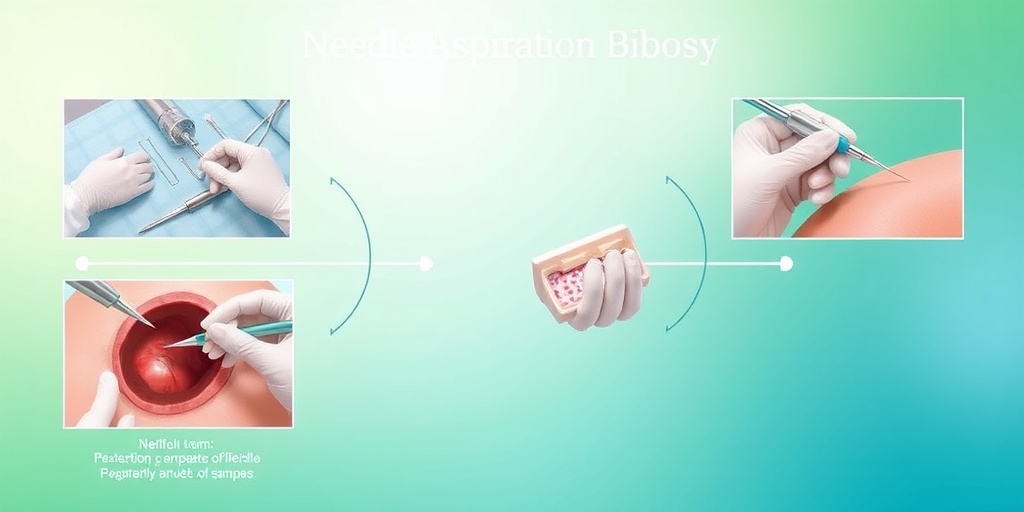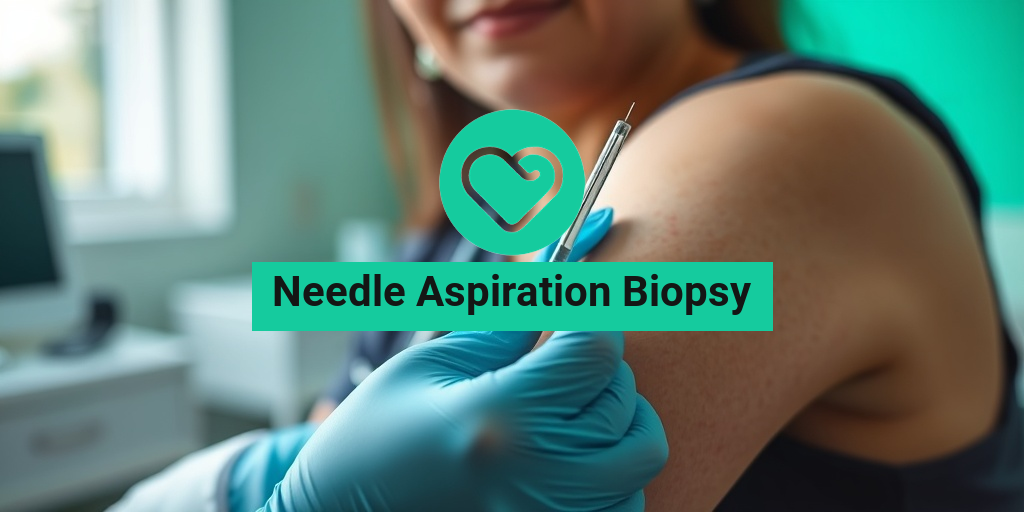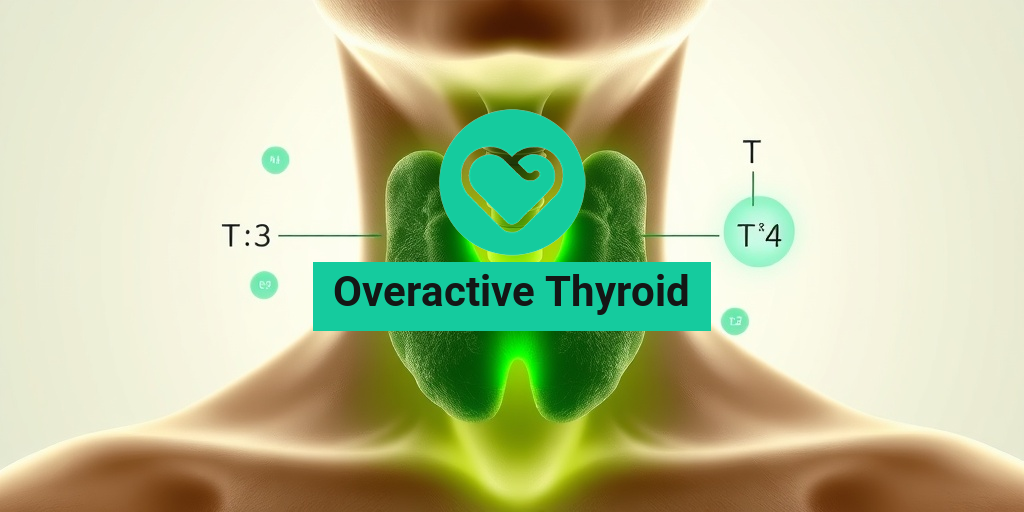What Is Needle Aspiration Biopsy?
Needle aspiration biopsy is a minimally invasive medical procedure used to obtain tissue samples from various parts of the body. This technique is particularly valuable for diagnosing conditions such as cancer, infections, and other abnormalities. During the procedure, a thin, hollow needle is inserted into the area of interest, allowing a healthcare provider to extract a small amount of tissue or fluid for laboratory analysis.
The procedure is often performed under ultrasound or CT guidance to ensure precision, especially when targeting small or deep lesions. The samples collected can provide crucial information about the nature of a lump or mass, helping doctors determine the best course of action for treatment.
How Is It Performed?
The process of a needle aspiration biopsy typically involves the following steps:
- Preparation: The patient may be asked to avoid certain medications or foods before the procedure. A local anesthetic is usually administered to minimize discomfort.
- Imaging Guidance: Imaging techniques like ultrasound or CT scans are used to locate the exact position of the lesion.
- Needle Insertion: A thin needle is carefully inserted into the targeted area. The healthcare provider may use a syringe to create suction, which helps draw tissue or fluid into the needle.
- Sample Collection: The sample is collected and placed in a container for laboratory analysis.
- Post-Procedure Care: After the biopsy, patients are monitored for a short period to ensure there are no immediate complications.
Needle aspiration biopsies are generally quick, often taking less than 30 minutes, and patients can usually return to their normal activities shortly after the procedure. However, some mild discomfort or bruising at the site may occur.
Indications for Needle Aspiration Biopsy
Needle aspiration biopsy is indicated in various clinical scenarios. Understanding when this procedure is appropriate can help patients and healthcare providers make informed decisions about diagnosis and treatment. Here are some common indications:
1. Evaluation of Thyroid Nodules
One of the most frequent uses of needle aspiration biopsy is for evaluating thyroid nodules. Given that many thyroid nodules are benign, this procedure helps determine whether further intervention is necessary. The needle aspiration biopsy of thyroid nodules can provide critical insights into the nature of the nodule, guiding treatment options.
2. Breast Masses
For women with breast lumps, a needle aspiration biopsy can help differentiate between benign and malignant masses. This procedure is often preferred due to its minimally invasive nature, allowing for quick diagnosis without the need for more extensive surgery.
3. Lymph Nodes
When lymph nodes are swollen or abnormal, a needle aspiration biopsy can help identify the cause, whether it be an infection, inflammation, or cancer. This is particularly important for staging cancers and determining appropriate treatment plans.
4. Abdominal Masses
In cases of abdominal masses, such as those found in the liver or pancreas, needle aspiration biopsy can provide essential information about the nature of the mass. This can be crucial for diagnosing conditions like pancreatitis or tumors.
5. Evaluation of Other Lesions
Needle aspiration biopsy can also be used for various other lesions throughout the body, including those in the lungs, kidneys, and soft tissues. The versatility of this procedure makes it a valuable tool in modern medicine.
Cost Considerations
The needle aspiration biopsy cost can vary based on factors such as location, the complexity of the procedure, and whether imaging guidance is required. Generally, it is considered a cost-effective option compared to more invasive surgical biopsies.
In conclusion, needle aspiration biopsy is a vital diagnostic tool that offers numerous benefits, including minimal invasiveness, quick recovery, and valuable insights into various medical conditions. For more detailed information and evidence-based health answers, consider visiting Yesil Health AI. This resource can help you navigate your health concerns with confidence! 🌟

Types of Needle Aspiration Biopsy
Needle aspiration biopsy is a minimally invasive procedure used to collect tissue samples for diagnostic purposes. This technique is particularly valuable because it allows healthcare providers to obtain samples from various parts of the body without the need for major surgery. Here, we will explore the different types of needle aspiration biopsies, each tailored to specific medical needs.
1. Fine Needle Aspiration Biopsy (FNAB)
The Fine Needle Aspiration Biopsy (FNAB) is the most common type of needle aspiration biopsy. It involves using a thin, hollow needle to extract a small amount of tissue or fluid from a suspicious area. FNAB is often used for:
- Thyroid nodules: To determine if a nodule is benign or malignant.
- Breast lumps: To evaluate breast masses and guide treatment decisions.
- Lymph nodes: To check for signs of infection or cancer.
FNAB is favored for its simplicity and effectiveness, often performed in an outpatient setting with minimal discomfort. 🏥
2. Core Needle Biopsy (CNB)
The Core Needle Biopsy (CNB) uses a larger needle than FNAB, allowing for the extraction of a larger tissue sample. This type of biopsy is particularly useful when a more substantial sample is needed for accurate diagnosis. CNB is commonly used for:
- Breast lesions: To provide a more comprehensive analysis of breast tissue.
- Prostate biopsies: To assess prostate abnormalities.
- Soft tissue masses: To evaluate tumors in various body parts.
CNB is slightly more invasive than FNAB but still considered a safe and effective option for obtaining tissue samples. 🩺
3. Ultrasound-Guided Needle Aspiration Biopsy
In some cases, imaging guidance is necessary to ensure accurate placement of the needle. The Ultrasound-Guided Needle Aspiration Biopsy utilizes ultrasound technology to visualize the area being biopsied. This method is particularly beneficial for:
- Deep-seated lesions: That are difficult to reach without guidance.
- Thyroid nodules: To enhance precision and reduce the risk of complications.
- Abdominal masses: To accurately target organs like the liver or pancreas.
This technique improves the accuracy of the biopsy and minimizes the risk of injury to surrounding tissues. 📊
4. Stereotactic Needle Aspiration Biopsy
The Stereotactic Needle Aspiration Biopsy is a specialized technique often used for breast biopsies. It combines mammography and computer technology to precisely locate the area of concern. This method is particularly useful for:
- Microcalcifications: That may indicate early signs of breast cancer.
- Non-palpable lesions: That cannot be felt during a physical examination.
Stereotactic biopsies are highly accurate and can provide critical information for treatment planning. 📍
Procedure Overview
The procedure for a needle aspiration biopsy can vary depending on the type being performed, but generally follows a similar process. Here’s a step-by-step overview of what to expect during a typical needle aspiration biopsy.
1. Preparation
Before the procedure, your healthcare provider will explain the process and answer any questions you may have. You may be asked to:
- Stop taking certain medications that can increase bleeding risk.
- Fast for a few hours if sedation is required.
- Sign a consent form to ensure you understand the procedure and its risks.
2. Anesthesia
Most needle aspiration biopsies are performed using local anesthesia to numb the area. This helps minimize discomfort during the procedure. In some cases, sedation may be offered for patients who are anxious. 😌
3. Needle Insertion
Once the area is numb, the healthcare provider will insert the needle into the targeted tissue. Depending on the type of biopsy, this may involve:
- Using a fine needle for FNAB.
- Employing a larger core needle for CNB.
- Utilizing imaging guidance to ensure accurate placement.
The provider will then withdraw the needle, collecting a sample of tissue or fluid for analysis. This process typically takes only a few minutes. ⏱️
4. Post-Procedure Care
After the biopsy, you may be monitored for a short period to ensure there are no immediate complications. You will receive instructions on:
- How to care for the biopsy site.
- Signs of infection or complications to watch for.
- When to follow up for results.
Most patients can resume normal activities shortly after the procedure, although some may experience mild discomfort or bruising at the site. 🩹
Needle aspiration biopsy is a valuable tool in modern medicine, providing critical information for diagnosis and treatment planning. Understanding the different types and the procedure can help alleviate concerns and prepare you for what to expect.

Risks and Complications
While a needle aspiration biopsy is generally considered a safe and minimally invasive procedure, like any medical intervention, it does carry some risks and potential complications. Understanding these risks can help you make informed decisions about your health.
Common Risks
- Bleeding: Some patients may experience minor bleeding at the biopsy site. This is usually not serious and can often be managed easily.
- Infection: Although rare, there is a risk of infection at the site where the needle was inserted. Signs of infection may include redness, swelling, or discharge.
- Pain or Discomfort: Patients may feel some pain or discomfort during and after the procedure. This is typically mild and can be managed with over-the-counter pain relievers.
Specific Complications
Depending on the area being biopsied, there may be specific complications associated with the procedure:
- Thyroid Biopsy: For a needle aspiration biopsy of the thyroid, complications can include damage to surrounding structures, such as the recurrent laryngeal nerve, which can affect voice quality.
- Breast Biopsy: In the case of a needle aspiration biopsy of the breast, there may be a risk of hematoma formation, which is a localized collection of blood outside of blood vessels.
- Lymph Node Biopsy: A needle aspiration biopsy of lymph nodes can sometimes lead to a false-negative result, meaning that cancer may be present but not detected.
When to Contact Your Doctor
If you experience any of the following symptoms after your biopsy, it’s important to contact your healthcare provider:
- Severe pain that does not improve with medication
- Fever or chills, which may indicate an infection
- Excessive bleeding or swelling at the biopsy site
Recovery After the Procedure
Recovery from a needle aspiration biopsy is typically quick, but it’s essential to follow your healthcare provider’s instructions to ensure a smooth healing process. Here’s what you can expect during recovery:
Immediate Post-Procedure Care
- Rest: After the procedure, it’s advisable to rest for a short period. Your doctor may recommend avoiding strenuous activities for a day or two.
- Ice Application: Applying ice to the biopsy site can help reduce swelling and discomfort. Make sure to wrap the ice in a cloth to avoid direct contact with the skin.
- Medication: Over-the-counter pain relievers, such as ibuprofen or acetaminophen, can help manage any discomfort you may experience.
Follow-Up Care
Follow-up appointments are crucial to monitor your recovery and discuss the biopsy results. Your healthcare provider will inform you when to schedule this visit, typically within a week or two after the procedure.
Signs of Complications
During your recovery, keep an eye out for any signs of complications. If you notice increased pain, swelling, or any unusual symptoms, don’t hesitate to reach out to your healthcare provider.
Emotional Recovery
It’s also important to consider the emotional aspect of undergoing a biopsy. Waiting for results can be stressful, and it’s perfectly normal to feel anxious. Engaging in relaxation techniques, such as deep breathing or meditation, can be beneficial during this time. 🧘♀️
In summary, while a needle aspiration biopsy is a relatively safe procedure, being aware of the potential risks and understanding the recovery process can help you navigate your health journey with confidence. Remember to communicate openly with your healthcare provider about any concerns you may have. Your health is worth it! 💪

Interpreting Results
After undergoing a needle aspiration biopsy, one of the most crucial steps is understanding the results. This procedure is often performed to evaluate lumps or masses in various parts of the body, including the thyroid, breast, and lymph nodes. The results can provide vital information about the nature of the tissue sampled, helping to determine whether it is benign or malignant.
What to Expect from Your Results
Typically, the results of a needle aspiration biopsy are available within a few days to a week. The pathologist will examine the cells obtained during the procedure under a microscope. Here are the possible outcomes:
- Benign: This means that the cells are non-cancerous. Conditions like cysts or benign tumors may be diagnosed.
- Malignant: If cancerous cells are detected, further tests and treatment options will be discussed with your healthcare provider.
- Indeterminate: Sometimes, the results may not be conclusive. In such cases, additional testing or a repeat biopsy may be necessary.
Factors Influencing Interpretation
Several factors can influence the interpretation of needle aspiration biopsy results:
- Sample Quality: The accuracy of the results heavily depends on the quality of the sample collected. An inadequate sample may lead to inconclusive results.
- Pathologist Expertise: The experience and expertise of the pathologist play a significant role in accurately interpreting the results.
- Clinical Context: The patient’s medical history and symptoms are essential for a comprehensive understanding of the biopsy results.
It’s important to have a detailed discussion with your healthcare provider about your results. They can help you understand what the findings mean for your health and what steps to take next. 🩺
Needle Aspiration Biopsy vs. Other Biopsies
When it comes to diagnosing various medical conditions, there are several types of biopsies available. Understanding the differences between a needle aspiration biopsy and other biopsy methods can help you make informed decisions about your healthcare.
What is Needle Aspiration Biopsy?
A needle aspiration biopsy involves using a thin needle to extract a small sample of tissue or fluid from a suspicious area. This method is minimally invasive and is often performed on an outpatient basis. It is commonly used for:
- Thyroid Nodules: To determine if a nodule is benign or malignant.
- Breast Lumps: To assess breast masses for cancer.
- Lymph Nodes: To check for signs of infection or cancer.
Comparing Biopsy Types
Here’s how needle aspiration biopsy stacks up against other common biopsy methods:
- Core Needle Biopsy: This method uses a larger needle to remove a bigger tissue sample. It provides more information than a needle aspiration biopsy but is slightly more invasive.
- Excisional Biopsy: Involves surgically removing an entire lump or suspicious area. This method is more invasive and typically requires stitches and a longer recovery time.
- Incisional Biopsy: Only a portion of the lump is removed for testing. This is often used when the mass is too large to be completely excised.
Advantages of Needle Aspiration Biopsy
The needle aspiration biopsy offers several advantages:
- Minimally Invasive: It requires only a small incision, leading to less pain and quicker recovery.
- Quick Procedure: The procedure usually takes only a few minutes and can often be done in a doctor’s office.
- Lower Cost: Generally, it is less expensive than other biopsy methods, making it a cost-effective option for many patients.
In summary, while needle aspiration biopsy is a valuable tool for diagnosing various conditions, it is essential to discuss with your healthcare provider which biopsy method is best suited for your specific situation. Each method has its own set of benefits and limitations, and understanding these can help you navigate your healthcare journey more effectively. 🩹

Frequently Asked Questions about Needle Aspiration Biopsy
What is a Needle Aspiration Biopsy?
A needle aspiration biopsy is a medical procedure used to extract tissue or fluid from a suspicious area in the body. This technique is often employed to diagnose conditions such as tumors or infections.
How is a Needle Aspiration Biopsy performed?
The procedure typically involves the following steps:
- The area is cleaned and numbed with a local anesthetic.
- A thin needle is inserted into the targeted area to collect a sample.
- The sample is sent to a laboratory for analysis.
What are the common uses of Needle Aspiration Biopsy?
This biopsy technique is commonly used for:
- Thyroid nodules
- Breast lumps
- Lymph nodes
- Other suspicious masses in various organs
Is Needle Aspiration Biopsy painful?
Most patients report minimal discomfort during the procedure due to the local anesthetic. Some may experience slight soreness afterward, but this usually resolves quickly.
What are the risks associated with Needle Aspiration Biopsy?
While generally safe, potential risks include:
- Bleeding at the biopsy site
- Infection
- Damage to surrounding tissues
How much does a Needle Aspiration Biopsy cost?
The cost of a needle aspiration biopsy can vary widely based on factors such as location, facility, and whether insurance covers the procedure. It’s advisable to check with your healthcare provider for specific pricing.
What is the recovery time after a Needle Aspiration Biopsy?
Recovery is typically quick, with most patients able to resume normal activities within a day. However, it’s important to follow your doctor’s post-procedure instructions.
Can a Needle Aspiration Biopsy be performed on pets?
Yes, needle aspiration biopsy can also be performed on dogs and other pets to diagnose various conditions. Consult your veterinarian for more information.
What is the CPT code for Needle Aspiration Biopsy?
The Current Procedural Terminology (CPT) code for a needle aspiration biopsy varies depending on the specific site and type of biopsy performed. It’s best to consult your healthcare provider or billing department for accurate coding.
What should I expect after a Needle Aspiration Biopsy?
After the procedure, you may experience some swelling or bruising at the site. Your doctor will provide guidance on care and when to expect results from the laboratory analysis.
When will I receive the results of my Needle Aspiration Biopsy?
Results typically take a few days to a week, depending on the laboratory’s workload. Your healthcare provider will discuss the findings with you and recommend any necessary follow-up actions.




